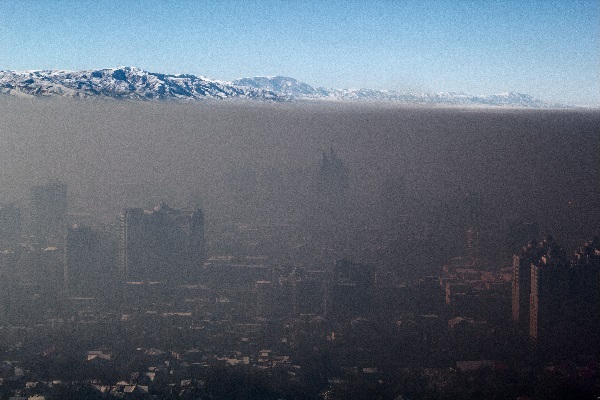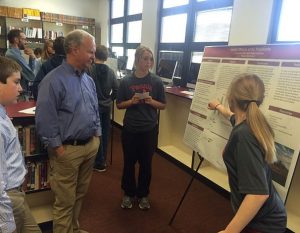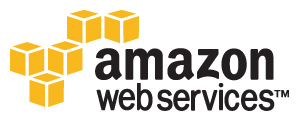Apply now to join our next cohort of Community Science Fellows and Community Leads!

Project Title: Encouraging Air Quality Data Collection and Education
Location: Boulder, Colorado
The Team: Michael Hannigan (University of Colorado Boulder, [email protected]); Daniel Knight (University of Colorado Boulder, [email protected])
The Initial Challenge:
The project team will create a user friendly website where individuals can post and learn about air quality data from various monitoring devices: Air Quality InQuiry (AQ-IQ). The site would be customized to support data produced by Hannigan lab Pods, but will be designed to accept data from other tools as well. Ultimately, the goal is to build a platform for low-cost air quality sensor data, which could facilitate better world wide air quality data, useful on a local scale. Through the collection of such data, our team believes researchers and concerned citizens alike can make more effective decisions and recommendations.
The Methods

Students presenting their research at the year-end AQ-IQ symposium; data analyzed with the help of the new website.
We worked with a computer science graduate student to design and build a user-friendly website to support the AQ-IQ program targeted at students in rural Colorado. Building this site included feedback from our community partners (primarily the high school teachers and students participating in our project).
This work was supported by an Amazon Web Services award, which provided the platform and computing power to support the site. We also hired a computer science graduate student on an hourly basis to build the site. The input from community partners was gathered during previous years of the project, and ongoing assessments helped us to evaluate the usefulness of the new site.
The team, including those leading the project from the University side and the computer science student met roughly once every 2 weeks over several months. The website was built over a few months and improved/added to over several more months.
The Results
Outputs:
Impact:
The website was integrated into the AQ-IQ Program during the fourth (2016-2017) and fifth years (2017-2018) improving the experience for both the participating teachers and the students. The addition of the website allowed students and teachers to focus on the data and their interpretations and understandings of it – rather than spending their time manipulating large amounts of data in excel (multiple teachers made this observation). The overall impact of this outcome was more learning on the part of the students and the opportunity for them to focus more on answering their initial research question – leading to a better understanding of their local environment.
Those building similar education and outreach programs could use ours as a model. The site is also open for others to use with alternative low-cost air quality sensor technologies. With the advances occurring in all different types of low-cost environmental monitoring tools, we will need more resources like this to assist with making sense of the data.
Reflections from the Project Team:
Things that contributed to success included input from communtiy partners and the capacity to create the website provided throguh the TEX/AWS award.
If the team were to do this again, they’d facilitate direct meetings between the community partners in rural Colorado and the computer science student (rather than those leading AQ-IQ from the University side serving as the go-between).
If anyone is looking to pursue a similar project, the team advises that you ensure you are building a tool/resource that meets the needs of your community partners, this will ensure it is used and results in improvements for your overall project.
For more information, visit:
In today’s rapidly changing world, understanding the impacts of pollution and greenhouse gas emissions on climate change and public health is critical to decision making. Traditionally, studying the source and impacts of pollutants required expensive and complex air quality monitoring devices. Extensive and widespread indoor air quality studies have been difficult due to the resource demands of the specialized equipment involved.
Recently however, the Hannigan lab at the University of Colorado Boulder has been researching and developing low-cost air quality monitoring devices called “Pods.” These Pods are small, lightweight, and easily deployable to almost any location around the world. With Pods, researchers and citizens alike can get key information on air quality and use it to study the impact of indoor air quality on human health. Additionally, data taken from Pods can supplement other air quality source data to provide better temporal and spatial resolution. As local governments and companies seek ways to reduce environmental impacts, this data can help drive effective policy reforms. The outcomes of new policies can be monitored over time and be replicated if they prove successful.
The data produced by these Pods and the other low-cost monitoring tools can be powerful contributors to improved understanding of the impacts of energy systems, hands-on STEM education, and regulatory policy making and evaluation. But first, the data collected must be aggregated, sorted, and available for the use of researchers and citizens alike. Currently, there are not any databases or sites dedicated to the aggregation of air quality data from citizen or community sources.
The Thriving Earth Exchange (TEX) and Amazon Web Services (AWS) are collaborating to use cloud-computing and Earth and space science to advance solutions to community challenges related to natural resources, climate change and natural hazards. After an open call for projects, four winners were chosen whose projects exemplify this goal. Each prototype is being moved to the AWS platform where they will be made publicly available for other communities to use and expand upon. Read more.

(c) 2024 Thriving Earth Exchange